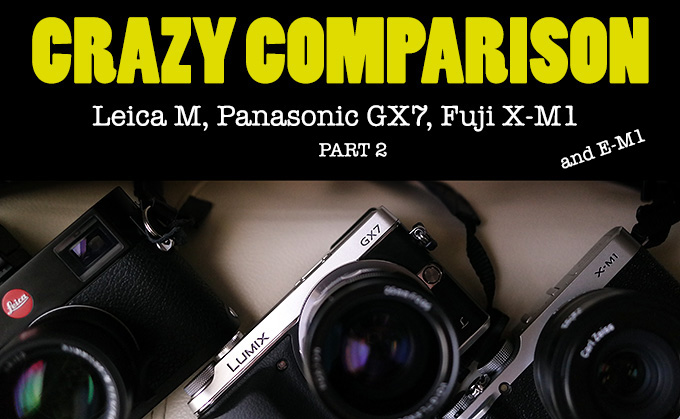
Crazy Comparison Part 2: Fuji X-M1, Leica M 240, Olympus E-M1 and Panasonic GX7
Woooooooo! It never fails, ever! Every time I have done a crazy comparison (and I have done many over the years) people get all kinds of bent out of shape. Anyone who knows me or this site will know I do these comparisons FOR FUN. They are real results, posted for all to see but these are cameras that are not even meant to be compared! The X-M1 is the budget Fuji. The GX7 is the top end Panasonic and the Leica..well, we all know what that is.
But it is fun sometimes to put underdogs in a race to see if they can get close to winning. It’s a classic game really. Does anyone not remember the tortoise racing the rabbit in old Saturday Morning cartoons? So to all of you getting all bent out of shape and the Fuji owners feeling like they need to attack and defend, relax. All I am doing is showing real results from all cameras. I was motivated to do this because so many trash Micro 4.3 as a system when they have zero clue about what it is, what it does or the results that can indeed come from it. It’s just as capable as APS-C as i have always said but in many ways MORE SO. Why? Because you will never miss a shot due to dodgy AF. You will have a solid well made machine that inspires you. You will have a selection of some of the best fast primes available. But a camera is a personal choice. We all have different likes, different passions and different opinions.
So as I showed in the 1st test, Micro 4/3 can hang with the big guys, and it appears I ruffled some Fuji feathers with my own opinions on the Fuji build and AF. I have been saying it since the X-Pro 1 launch and it still remains. The Fujis need work to be exceptional. I strongly feel Fuji is working on this and in 2014 we may see something special from them. Then when everyone upgrades and says “Wow, it is so much faster to focus and I never miss a shot“…well, then my honest comments on the current X bodies will prove to be true 🙂 It will happen. Watch and see.
When you own a camera system and are dedicated to it there is something that happens along the way. You forgive it for its shortcomings..you bond with it and you have no idea what other cameras can do because you shoot your camera. I do that with the Leica! I like shooting it so much that I forgive it for its off-color in some lighting, I forgive it for being $7000 and I forgive it for having a slow clunky EVF 🙂 Many feel the way I do about their Fuji or Olympus or Sony or Panasonic as I do about my Leica. But whatever we do, we should never lose track of WHY we use what we use. Because we love it, enjoy it and it makes us want to go out and photograph. Whatever that camera is for you it is the right one 🙂
In fact, we should not even worry about new cameras or new tech as long as we are happy with our current camera. But we live in a “Disposable Society” where we buy, sell, buy sell and buy and sell. Sites like mine do not help this either! Believe me, I am well aware.
At the same time, many of us love technology. We enjoy using new cameras, testing them, trying out new lenses. It brings us joy as it is apart of our passion. So in many ways it is perfectly fine because we only live once, might as well enjoy it while we can.
What I am getting at is that these comparisons are called “Crazy Comparisons’ for a reason. Have fun with it and take it for what it is, a comparison of mismatched cameras. 🙂
I will always stand by my word though as I do not lie or make up nonsense for the sake of it. I report my true feelings so if I say the Fuji bodies feel cheap to me, that is what I mean. If I say the Pansonic GX7 has a cheap feeling dial it is because I feel it does. If I say the Leica is overpriced it means I feel it is. None of this means camera A, B or C is crap. They are all fantastic in their own way.
In any case, enjoy the next set of comparisons which will include a high ISO test and another image shot at f/2 with each camera.
BTW, to those who say I hate Fuji, I do not. The fuji X100 and X100s are some of the best cameras you can get and the X100s focuses as a Fuji should. It is one that Fuji improved and they did a great job. They need to do this in a new X-Pro 2 and X-E2 and then we will be getting somewhere.
—
HIGH ISO TEST
For this test I am testing ISO as I ALWAYS have for the past 5 years, so those who want to complain about it I suggest you do not even look at the results.
I test cameras in a real world way, always have, always will. I take a camera and use it as 99% of buyers would. I turn it on and use it. I do not set the metering to match another brand of camera, I use the cameras metering as is. ALL cameras have different ISO discrepancies. ALL of them. What is ISO 1600 on one camera is not really 1600 on another. Just how it is. But when I use say a GX7 I am not trying to set it to meter like a Sony RX1. No, I use it as it is. So this test will be done with each camera metering how they meter at any given ISO so you see WHAT YOU WILL GET from said camera. Real world.
So each camera was set to ISO 3200 for this test as that is as high as most of us ever will go and many will not even touch that high of an ISO these days. But for the sake of testing, ISO 3200 sounds good.
With all of that out-of-the-way, let us take a look at three cameras with three different sensor sizes and what to expect from ISO 3200 with each one in a normally lit home environment. Testing high ISO with studio lights is ridiculous. Who shoots high ISO in a studio light environment? No one. Again, real world because with less light we see the true ISO performance when we will really be using high ISO.
YOU MUST CLICK THEM FOR FULL SIZE and The Olympus E-M1 was delivered just as I was setting up this test so I included it in this ISO test!
Leica M 240 ISO 3200 – f/8
–
Fuji X-M1 ISO 3200 – f/8
–
Panasonic GX7 ISO 3200 – f/8
–
and the Olympus E-M1 which was delivered just as I was setting up this test! – ISO 3200 – f/8
–
100% crops to make it easier
The CLEAR winner at ISO 3200 is the Leica – richness, color, noise..all beats the other three. The Fuji is next in line with a sharp image (all were shot at f/8 on a tripod) and some noise where the Micro 4/3 are still looking good IMO and up there with many APS-C cameras. In print or web size, you would not even see the noise and this is at 3200! Even so, the Leica is VERY far ahead here IMO, as it should be for that kind of premium 🙂
One more image from RAW test (Olympus E-M1 was not in my hands for this one)
Leica M 240 – 50 Summilux at f/2 – MUST click it to see larger/full size
–
Fuji X-M1 – Zeiss Touit 32 1.8 at f/2 – MUST click it to see larger size
–
GX7 – Nokton 25 at f/2 – from RAW – resized – MUST click it to see it correctly
–
So there you go. You can take a look at the samples and see for yourself. They are all good at producing lovely looking files. 🙂 Me, I prefer the GX7 and M 240 as I find the Fuji to be off color and not as good looking of a file. If this were taken in Studio light, the Fuji would have shined. But in natural light, the other two, to me, do a better job.
Steve
I will leave you with one from the GX7 and 25 0.95 wide open and up at the closest focus distance. Some funky color PP here as well 🙂
HELP ME TO KEEP THIS SITE GOING AND GROWING!! IT’S EASY TO HELP OUT & I CAN USE ALL THE HELP I CAN GET!
PLEASE Remember, anytime you follow my links here and buy from B&H or AMAZON, this helps to keep my site going. If it was not for these links, there would be no way to fund this site (and the cost these days to keep it going is pretty damn high), so I thank you in advance if you visit these links. I thank you more if you make a purchase! I have nifty search bars at the upper right of each page so you easily search for something at either store! I currently spend 10-14 hours a day working on this site and the only way that I can pay for it is with your help, so thank you! Currently my traffic has been increasing but my funds to pay for the site has been decreasing, so any help would be GREATLY appreciated!
Even if you buy baby food, napkins or toothpicks at Amazon it helps this site, and you do not pay anything extra by using the links here. Again, you pay nothing extra by using my links, it is just a way to help support this site, so again, I thank you in advance ![]() More info is here on how you can help! If you enjoyed this article/review, feel free to leave a comment at the bottom of this page and also be sure to join me on twitter, my facebook fan page and now GOOGLE +
More info is here on how you can help! If you enjoyed this article/review, feel free to leave a comment at the bottom of this page and also be sure to join me on twitter, my facebook fan page and now GOOGLE +

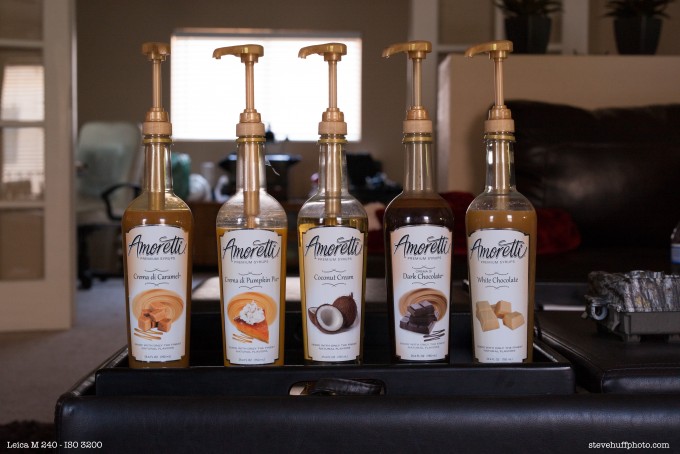
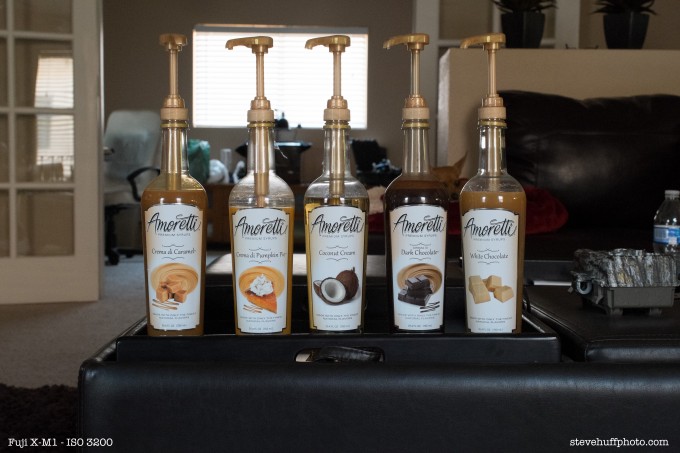
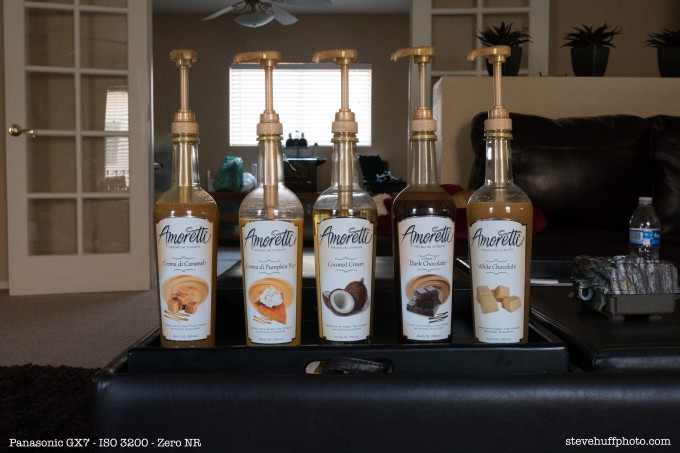
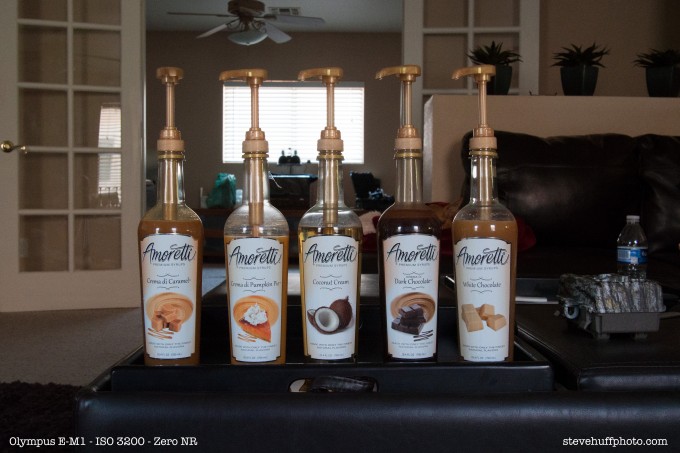



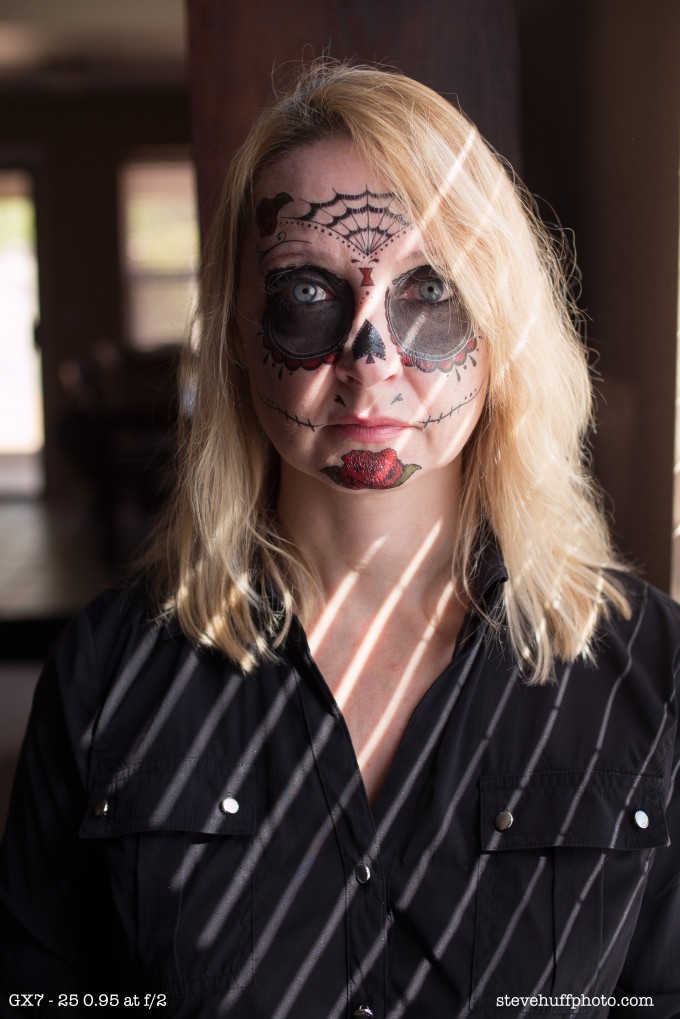



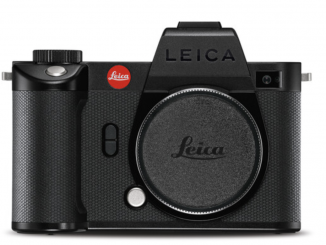
wheres the d600? the d7000?
Looking forward to you adding the upcoming Sony FF to the mix.
😉
Leica has ¾ stops of high sensitivity advantage over APS-C (xtrans gives nothing in fact, whatever fuji fanboys are crying) based on DxO measurements and we see this clearly here.
The 16.3 MP X-Trans sensor has never been tested by DxO and the silly Leica has no Autofocus. The cheapest POS digital camera on the market has AF, Leica does not. This makes Leica inferior to ALL other digital cameras.
I agree, the Leica looks somewhat warm, Pana and Fuji look more natural
The Fuji is the warmest of the three in the portrait sample..yellowish.
Yellow is exactly how I felt on that one too. Wasn’t a pleasant warm.
You crippled the Fuji by using an inferior third party lens, rather than the exceptional XF 35 1.4R OR XF 23 1.4R (while using a genuine Leica lens on the M240).
That made me chuckle. Crippled by using a Zeiss lens. 🙂
You would not have been afraid to use a proper Fujinon lens if I were not correct.
This was said about the 35 1.4 by another well known and popular photographer with a review website:
“This Fuji XF 35mm f/1.4 is an aspherical 50mm-equivalant lens with performance better than LEICA’s equivalent LEICA SUMMILUX-M 50mm f/1.4 ASPH.”
and
“This Fuji lens has the superior sharpness and lack of distortion of the LEICA SUMMICRON-M 50mm f/2, with the speed and superior bokeh of the LEICA SUMMILUX-M 50mm f/1.4 ASPH, and focuses faster, focuses closer and has less light falloff than any of them. Bravo, Fujinon!”
and
“AF is fast and exact, and covers a broad range right up to macro. I can’t focus my LEICA this fast, much less this precisely, repeatably and accurately in low light.”
and
“The Fuji XF 35mm f/1.4 ASPH is among the best lenses I’ve ever tested, excelling at both the technical aspects of sharpness, falloff and distortion, as well as the artistic aspects of ergonomics and bokeh.”
So yes, the XM-1 was crippled (intentionally) by an inferior (and overpriced) lens.
I believe you just dis-credited yourself by quoting that guy…
I’m willing to prove I’m right, IF Steve is up for the challenge:
I’ll submit some untouched OOC jpegs from one of my XE-1/XM-1/X-Pro1 bodies paired with the Fujinon 35mm 1.4R complete with EXIF data to prove that they have not been altered in any way. My 35mm will be roughly a 50mm equivalent, so Steve can use ANY of his M cameras and ANY Leica 50MM lens to take a few of his own (using the same criteria – no PP, OOC jpegs).
Next step – post them in an article on this site and let the readers decide, without knowing which images were produced by whom. I’m willing to bet that the readers will find the X-Trans OOC jpegs far more pleasing than those produced by the Leica.
Honestly, any M4/3 camera with virtually any lens would be a more serious competitor.
Leica again here for me. The tones are what I admire. I usually like the tones on the Fuji X-Pro1 (though not tested here) but do not like the tones of the X-M1. The Leica has best bokeh, then GX7, then X-M1 IMO.
The leicas got banding and colour shifts in the shadows, even though its overexposed. Are you using centre weighted or advanced mode?
I only use center weighted with the Leica. If you feel it is overexposed then that is what the camera gave me for exposure. Some would say the others are underexposed (and have via email). But remember, what you see is what you get from each camera. The Leica still wins at ISO 3200 to these eyes. Easily. But I would hope so because if it could not beat a Micro 4/3 at ISO 3200 we would have a serious problem. 🙂
Any chance you are willing to snap a few with the same Leica lens? Really curious to see actual sensor rendering with the same lens/exposure/aperture/iso, granted the composition would be different. But Im sure everone here can see how sharp the center is. Just spit balling and tossing that out there. I am assuming of course you have the adaptors for all 😉
I’m really impressed by the high ISO performance in the GX7 and EM-1 (the Leica is really nice, but that’s pretty much what I expected). If you performed the test with a GX7 and a GH3, which is what I use, you’d see a really clear difference, I think. The GH3 sensor starts doing weird stuff in low light.
I think we’re rapidly approaching a point at which most mirrorless cameras in the $900-$1000 are capable of delivering incredible results, regardless of brand. As others have pointed out on this post, it’s a great time to be a photographer.
I had fun reading this comparison and am sorry some people (especially Fuji people) are getting bent out of shape. You’re absolutely right that loyalists exaggerate their brand’s advantages and turn a blind eye to its disadvantages (behavioral economists call this the “endowment effect.”)
In fact, one thing I’d say I’ve learned from this crazy comparo is that while it’s really hard for most photographers (me included) to admit it, the vaunted “image quality” is really at best a tie-breaker nowadays.
In all honesty, any of the cameras you tried would be plenty good enough for the way I usually photograph. Image quality is only one component of PICTURE quality — and for most of us, a camera that fits us comfortably will give us more emotionally satisfying pictures than a camera with marginally superior IQ specs. If you have size 10-1/2 feet, you won’t be comfortable in size 9 shoes no matter how well-made they are, right?
One benefit of the generally high quality of good cameras is that we can afford to be picky. For example, I had pre-ordered a GX7 back in August, was pretty excited about it, received it last Monday, and SENT IT BACK! Why? I liked the controls, viewfinder, and handling, but the shutter’s too noisy for me (I shoot a lot of concerts and museum events.) I know, it has a “silent mode,” but that’s just a mode. I need a camera that’s unobtrusive in every mode, so I’m sticking with my Olympus E-M 5 for now.
I’m with you on Fuji. I love their lens lineup, and I’m tempted by the X-Pro 1 because I love optical viewfinders (still own and occasionally use an Epson R-D 1 just because it’s so nice to look through.) But I’m trying to stand firm until Fuji gets its cameras up to the same performance standard as its lenses. For that kind of money I don’t think I should have to make excuses, even to myself.
Hi Steve,
I am a big fan of your site and I read all your camera crazy comparisons. They are great and by reading them we get a good idea of the quality and behaviour of the cameras.
Now I miss a similar comparison of the lenses, specially of non-comparable lenses like the Panasonic 20mm and the kit zooms. I am an amateur photographer with a GX7 and the 14-42 X zoom. I have been reading your good opinions of the prime lenses and I wonder how worthy is spending 300€ or more on a prime lense to get a better image quality.
Thanks.
Julio
Dare I say the winners are really the Micro 4/3 cameras? It’s no real stretch for a camera with a full frame sensor to behave the way it did in these comparisons. On the other hand it’s clear the Micro 4/3 lens and sensor combinations are working much harder to get these kinds of results. It appears Olympus and Panasonic have something.
Love the comparisons…. even though they are crazy! LOL. We love the gear to much many times and not the photography. I’m for anything that shakes that up. Keep up the good work.
Thank you Steve, just one comment:
looking at the exposure of the window blinds, the Leica is slightly “over exposed” compared to the three others – the blinds are blown out completely, not so on the others. Could be why the Leica has more “pop” – or not.
No, that would not be why it has more pop. ALL lenses were set at f/8, all were the same ISO. Cameras chose exposure (as explained). The Leica has more pop due to it being a full frame sensor, which handles noise and color and DOF differently.
I just love this crazy comparisons Steve. Its simply an amazing fun time to be shooting indeed. After i left my FF gear almost two years ago and jumping into m43 and mirrorless have never looked back! great work Steve, big fan of your site and work, just never commented!
These tests are confusing. its impossible to tell what creates what. There’s no way for me to get useful information about the camera or the lens. What creates the image quality… the camera or the lens? It would be far more useful if you’d put the same lens on the three different bodies. And then show us what the three different lenses do on any ONE of the bodies.
What you ask is impossible. Micro 4/3 lenses are not compatible with Fuji X lenses. You cant put a Micro 4/3 lens or a Fuji lens on a Leica. if you put a Leica on a Micro 4/3 you are doubling your focal length. Now that would be confusing.
What you see is a 50mm lens on each camera at the same apertures – even Steven, nothing to confuse at all. What it shows is how good Micro 4/3 is 🙂 Something I have said for a while now.
I understand that the lens/body match-ups I suggested are impossible. I simply wanted to point out that Steve’s crazy comparison doesn’t help us separate out what is creating the image quality… the camera or the lens.
These shots is exactly the reason I sold my K-5, plus a lot of lenses, to finance getting into FX. In low light there is a hell of a difference between my D600, and my old love the K-5: Far less noise, and richer colors, and even red colors are correct (Pentax have never been good at reds).
Keep up the good work, Steve!
I have been lurking around a long time and it is funny how one’s loyalty to a brand can make them so emotional. I sold my Xpro1/34 f1.4 combo last month, not because it is no good but because it was collecting dust inside the cabinet. Why, you may ask? That is because there is something about the ergonomics, and add it to the Gariz case and the handling just seem off for me. Put on other lenses on the X pro and it felt even weirder to handle.
Compared to my Ricoh M mount, I just feel excited and motivated to shoot, with whatever lens I can get my hands on. Leica, Contax, FD, Minoltas, Nikkors etc. So what if the M mount is old technology, grand old daddy sensor compared with whats available. So what if you trash it and complained about all its weakness. I will just smile and continue shooting. I see no need to defend it and rather spend the time shooting. Which is why I simply cannot understand the Fuji boys here, trying to tell Steve and the world that he is wrong, he is bias, that there is a secret agenda etc etc. Why do you need to do this? Just continue to support and shoot with your Xpro, XE or whatever X camera you like. Stop telling us that this is the ‘best’ alternative aka cheaper than Leica. It makes no sense.
And I still keep my Fuji X100. This is simply great and better than the Xpro1 I sold. No need to tell me I am wrong because I am glad I sold the Xpro 1 and sticking to my Ricoh.
Keep up the good work Steve, and I enjoy the Fuji boys scrambling to defend their dear camera…until the Xpro2 of course.
Regards
Chia
Leica wins, even maybe Nokton as a close second, but something not nice about the Fuji…
I’ve been maintaining 8×10″ Costco PRINTS going into albums for over 8 years or so. These prints come from Lomo LC-A+ toy cam w/ Fuji Film Reala 100 film and digital files by Canon 5D 50/1.4, Nikon D700 50/1.4G, Nikon D7000 35/1.8DX, Canon S95, Oly E-P3 w/ 20/1.7,Sony RX100 and iPhone 4S & 5. There are no real clear favorites from any of the digital cameras (despite the obvious sensor/lens difference). But the Lomo/Reala 100 combo is actually the more aesthetically pleasing prints, overall, by a hair. Go figure! I’d say the camera/lens/film/sensor almost doesn’t matter.
Fuji – Zeiss is the best for me for its intimate and narrative feeling. I used to envy Leica for its lenses, but that feeling has gone without my noticing it. Probably I have just become confident about my preference.
It’s interesting for me to see the sensor size doesn’t make almost no difference in this comparison. Thank you!
I wish people would just smile and enjoy the “just for fun” comparisons. For me, color and focus are more important than grain. Sometimes, grain looks good to my eyes.
In this comparison I think that the Fuji Colors are good for portraits and not so good for everything else
Shall we put the price difference behind the pictures?
Already did in Part 1 where I went over that pretty clearly.
i’ve never understood why people don’t like comparisons. This was great, thanks so much for taking the time to do it! Why the Leica is clearly outstanding, it’s amazing to see how much these smaller cheaper formats have come on. Really impressive.
I have to agree, the Leica produces beautiful results, it’s a depth in the image that the other can’t reach with their more washed out renderings.
/Denny
Love the crazy comparisons.
So many good cameras out there, it really depends on feel, chemistry
with the camera and budget.
Still would love to see you do a shoot out between the GX7 and the OMD M1
Oh how I wish you had kept your NEX-7 – I miss having it included in these 🙁
But apart from that, love the Crazy Comparisons!!
P.S. remember when Fuji use to be know for its beautiful, warm skin tones? That was back in the day before the X-trans sensor. The X-trans is beautifully sharp but it makes me wonder if there are possibly other trade-offs.
If it’s for a individual photographer about making nice shots, all will do the job…
But the Ego rules in also
The GX7 is a great Cam. Panasonic makes nices Cams since the G1 and GF1, but the colors were always problematic. But they changed a lot. I have a G6 and I love it. The images have great color, nice high ISO and even if there is not that much DOF, the images pop a lot. Nice comparison Steve and I find it’s not that crazy. It shows that M43 became pro level (and pro level Cams like the M became stellar 🙂
I’m not a Fuji owner, but the company has recently done a great job of supporting their products with firmware updates. The X-Pro 1 and the X-E1 were both endowed with focus peaking capability via firmware updates. Some other manufacturers not been nearly as supportive in this way.
I’m disappointed that there wasn’t a blind test =(
Indeed, don’t think we’d be seeing so much Leica love if it had of been.
Brilliant examples.
I love the leica look, but on the portrait is seems the skin tones are a little red and focus/depth of field a little too shallow, would have preferred it stopped down a little. The Fuji skin tone seems more natural, but the focus point seems different to the leica thus giving a different effect and its a little too sharp for a portrait although detail where in focus is scary!
Both have their plus points, but I prefer the Leica softer look apart from the skin tone.
Excellent comparisons
This was a great exercise. Very interesting and enjoyable. I got a lot out of it. Thank you.
Thanks for the crazy comparison, what I saw is the color from gx7 is more neutral and closest to real scene, sometime close to leica’s skin tone color on tatoo face sample
I see why you like the Leica so much. That thing captures some great color at high ISO, and still has a very smooth noise pattern. Awesome. Having said that, though, the GX7 hangs in there with the big gun a lot better than I thought it would.
I know you don’t like how “plastic” the GX7 feels, but to most of us, that just means it is lightweight. Most people are willing to put up with a flimsy feel to get a more portable camera. If the rest of the features are easy to use, Panny may have a winner on their hands. So what is your opinion? Fun to shoot with or not?
I definitely prefer the color from the M240 in this one, but the GX7 looks pretty good too. I would have liked to see how they compare with a common color temperature selected manually, maybe in a future post?
The colour of the Leica is wonderful. I love these comparisons, they actually show how good the cheaper/much cheaper options are. I’d like to see the best v’s best of Olympus/Fuji/Leica, using their native lenses. Maybe a 35mm and 50mm shootout?
Just from my perspective, it’s a little difficult to accept the “Real World” catch cry in your reviews when Leica Glass via an adapter is used for a camera which has it’s own native system. Also, in the real world, very few people walk around with $20k worth of equipment…
Only my opinion and not a criticism, just an observation.
So, not unsurprisingly, the granularity of the noise in the Leica 240 is much finer and more pleasing than that of the OM-D E-M1 … showing the clear advantage full-frame has over M4/3s.
The Leica is smoother, though the Olympus does show remarkably good retention of detail across both highlights and shadows, all things considered.
Have to say I’m not a fan of the Zeiss lineup on the Fujis. In my opinion the XF 35mm f/1.4R is superior to the equivalent Touit.
I have a Panasonic LX5. I have shot so many moments with it and I love how I can share them with others. And now reading and seeing this kinda made me feel “inferior” in some ways. But it does not mean I hate Steve for doing this or I don’t like my LX5 anymore. This has allowed me to see, for real, what other great great products there are in the market and how they perform. And to compare them side by side is just awesome! I mean who does that, really?!! Apparently Steve here does and I thank him for that because when the time comes I’m gonna buy a better camera I will know exactly how they’ll perform. I may not, ever, able to own a Leica (it’s freakin’ expensive!) but the quality and the bar that I will be comparing my next purchase will be that of a Leica. And all is good.
I had an LX3 for quite a while and I loved it. I sold it to pay for a camera with interchangeable lenses and I still miss it sometimes.
Leica images look magical (even when viewed from a camera phone)
For the iso comparisions all the shutter speeds are similar so these are legit images to compare iso with.
Keep up the great work!
The CLEAR winner at ISO 3200 is the Leica – richness, color, noise..all beats the other three ?????
Leica M240 = red and the warm tones too warm (LEICA FORUMS ) A VERY EXPENSIVE CAMERA WITH COLOR PROBLEMS . O.o
Steve how do you feel the gx7 jpegs stack up against oly/fuji jpeg?
Gold to the Leica, Silver to the GX7, Bronze to the rest, and this is the thing that bugs other camera users about us Leica fan boys nobody cares or remembers who wins silver or bronze.
I’ll preface my response by first saying I’m a Leica fan.
Unfortunately, those “bronze” manufacturers have far more market share than Leica (that, plus a stubborn refusal to embrace digital almost led Leica to bankruptcy in the mid-2000s); are in better financial shape; attract a much greater percentage of professional photographers to their ranks; and win more industry awards ― both for photography and technology ― than Leica.
Somebody’s remembering those poor, downtrodden “bronze” manufacturers. 😉
Nice 500px site! Excellent work.
Leica wins for those that choose and have the talent for feeding their families with their photographs. The silver and bronzes are for the rest of us as you get full manual control, great choice of lenses and beautiful image quality. I feel there is a place for all.
I love these crazy reviews as Steve puts in the full image to make your own opinion. For me the Leica also wins but when I look at the cost of all the new cameras my EM5 will be staying by my side with a satisfaction that it still does the goods at $0 extra cost.
I just hope Olympus has a horse shoe attachment that connects to the Olympus app made for the EM1.
“Leica wins for those that choose and have the talent for feeding their families with their photographs.”
There are very, very few photographers [relatively] who feed their families using Leica. It’s Nikon and Canon DSLRs, primarily. They have the quality, the systems, the technology … and the reach that Leica simply does not. You’ll never see Leica M cameras being used by pros to shoot wildlife, or sports, or action.
Over the past half-century Leica has migrated from being a professional tool to being a luxury boutique item for the uber-rich. Look at the company’s own marketing. The initial brochure for the M240 was filled with woefully lackluster images; meanwhile Leica continues to actively partner with fashion organizations to manufacture special “luxury” editions.
Nothing wrong with this approach, per se; Leica’s heritage enables them to do this in a way no other manufacturer can (I’m looking at you Hasselblad), so really why shouldn’t they? And they make beautiful instruments with wonderful glass, there’s no question about it.
But they’re no longer the only game in town; haven’t been for a long time now. As a photographic tool, the M is very limited in the sorts of images it can capture. For most working pros, that’s a liability.
Anecdotally, have a look at this group of shooters >> http://thephotosociety.org/
Check to see what percentage of them are using Leica.
These crazy comparisons are one of the most interesting reads on your site (among other content also). Most of us have not multiple cameras from different systems available at the same time, so the comparisons can be hard to execute. Therefore these provide valuable information what are the real world differences between cameras and thus assist us in making up our minds, when deciding what to get next to fullfill our GAS. Thank you!
One point, and to me one of the most important ones, that favors hugely the recent Olympus cameras is their fantastic 5-axis IBIS. This feature has reduced dramatically the need to use those high ISOs in real world photography for still subjects, even more as there is wide selection of fast aperture lenses nowadays available for m4/3. Therefore it does not really matter that much if the high ISO capabilities of Olympus bodies are a stop or so lower than for example in Fuji bodies, as the IBIS makes more than up for it in real life shootings.
Thanks. Yes, that 5-Axis is amazingly good.
As a daily follower, I am fascinated by the variety of material presented. For me the “real world” perspective is great because I am not a pixel peeper, but a man who wants the camera to attempt to duplicate what I see. I am intrigued by the absolutists that feel they must challenge vigorously opposing views. I am confident enough in my viewpoint to listen to others and think about their position. I compliment Steve H for working hard at explaining what he does and why he does it. Bravo.
I follow this site to learn from Steve and those who comment and especially those who’s work is posted here. I don’t understand some of what I see here but I try to learn and improve what I do by choosing what fits my needs and style.
Steve, keep up the good work and may your skin stay thick and not be bothered by the sharp barbs out there.
Steve C.
On an other site photograhylife.com he has done a 180 and switched from m43 to Fuji for his CSC needs so its just everyone’s opinions, Myself ive had over the last 3 years a D7000 then an OMD, then D600 and a X100, then i gave my D600 to my dad and got a XE1 to go with my X100. I would love to own all of them but cant.
honesty cant wait until a Xpro2 ( anything with speedy AF) Fuji, or a FF Sony System gets released or a RX1 with a EVF/OVF gets released.
Then again ive printed amazing night photos with my previous OMD so if the price dropped a lot I wouldnt hesitate to pick one up again. Happy days to be into taking photographs.
Great work on your flickr site Chris!
Great Steve, love this crazy comparisons. Keep it up! Love the colors in the Leica in the ISO test.
Love/hate your crazy comparisons, love the fact that you share them with us. Hate the jealousy 🙂
The comparisons are entertaining….and my little Olympus is mighty!! …just like I thought. LOL!
We should all be happy that we have this kind of technology at our finger tips. In the past we would have had to shoot TMAX 3200 with grain the size of ping pong balls. Let alone now we can just change the ISO any time we want. Don’t get me wrong film has some aesthetic advantages, but any of these cameras, in the right hands can create a predictable quality image that takes away the guessing and limits that were involved with film. It amazes me that we can shoot handheld in such low light with this kind of quality. Try to take a FM2 out on a stroll at night, with out a flash or tripod, with any kind of film, and see what kind of images you get. It is an exciting time to be a photographer! Thanks for these comparisons. I look forward to them.